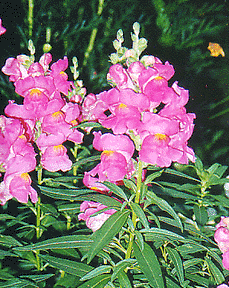Trees:
1) Crape Myrtle trees or Lagostroemia:
Crape Myrtles prefer warmer climates and they are know for their colorful and long-lasting flowers. The bark of a Crape Myrtle also sheds throughout the year, giving the tree a mottled appearance.
2) Pecan trees or Carya illinoinensis:
A Pecan tree is a large deciduous tree and a species of hickory. It is known for the pecans that it produces which are technically drupes, a fruit with a single stone pit.
3) Southern Magnolia trees or Magnolia grandiflora:
Southern Magnolia trees are native to the southeastern United States. It is a medium to large evergreen tree that produces large white, fragrant flowers.
Shrubs:
1) Loropetalum bush or Loropetalum chinense:
The Loropetalum bush is an evergreen bush that enjoys the sun.
2) American Holly bush or Ilex Opaca:
A holly bush has pointy leaves and berries and is part of a genus that includes 400 to 600 species of flowering plants.
3) Poison Ivy or Toxicodendron radicans:
Poison Ivy is a poisonous North American shrub that is known for its production of Urushiol that causes irritation and rashes. It is not true ivy.
Flowers:
1) Daylillies or Hemerocallis:
Daylillies are perennial plants. The flowers usually do not last longer than 24 hours, with new flowers opening every day.
2) Snapdragons or Antirrhinum:
Snapdragons are perennial plants that do well in sunlight.
3) Marigolds or Tagetes:
The blooms of this flowering plant can be golden, orange, yellow, or white, often with maroon highlights.










No comments:
Post a Comment